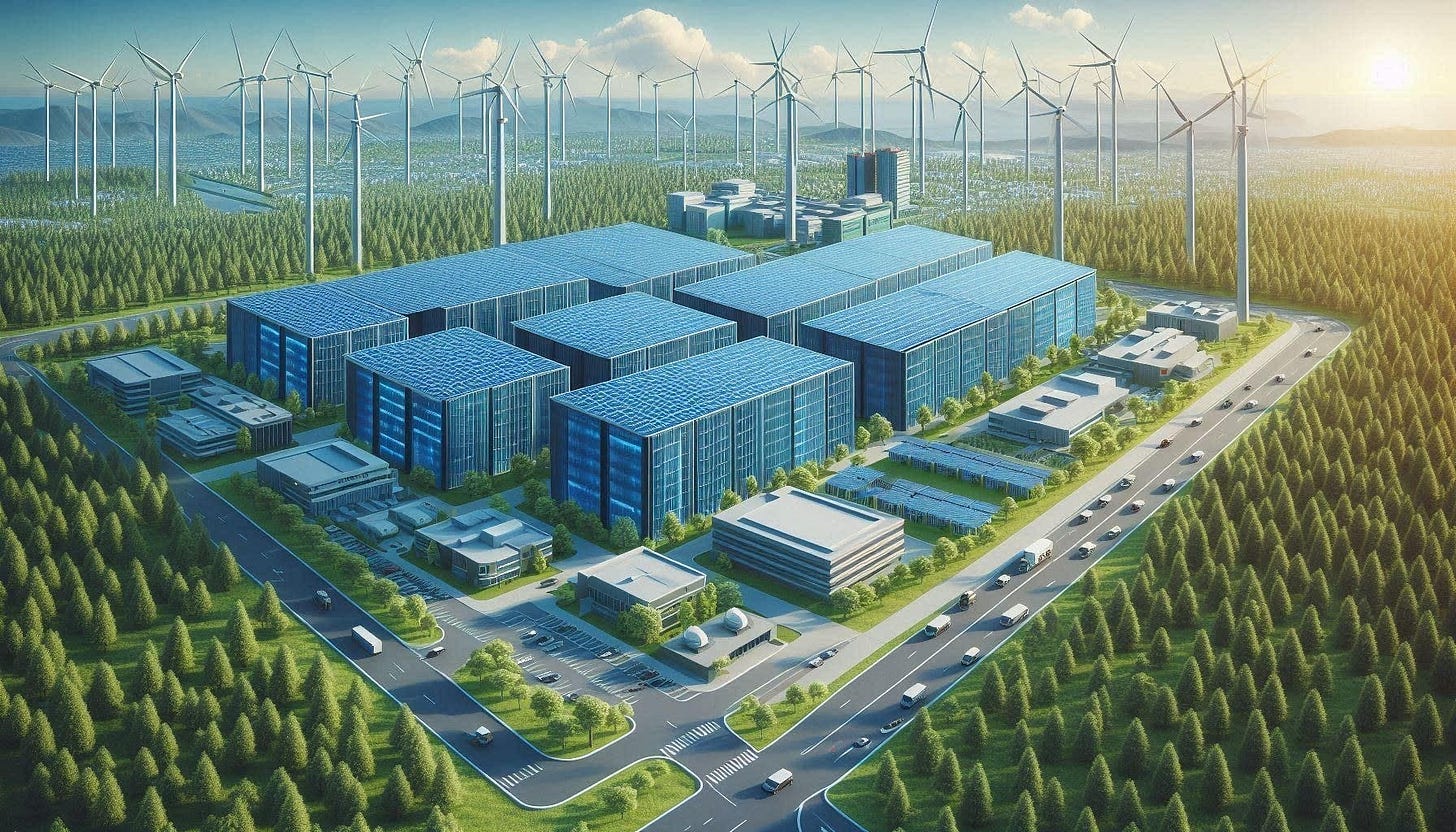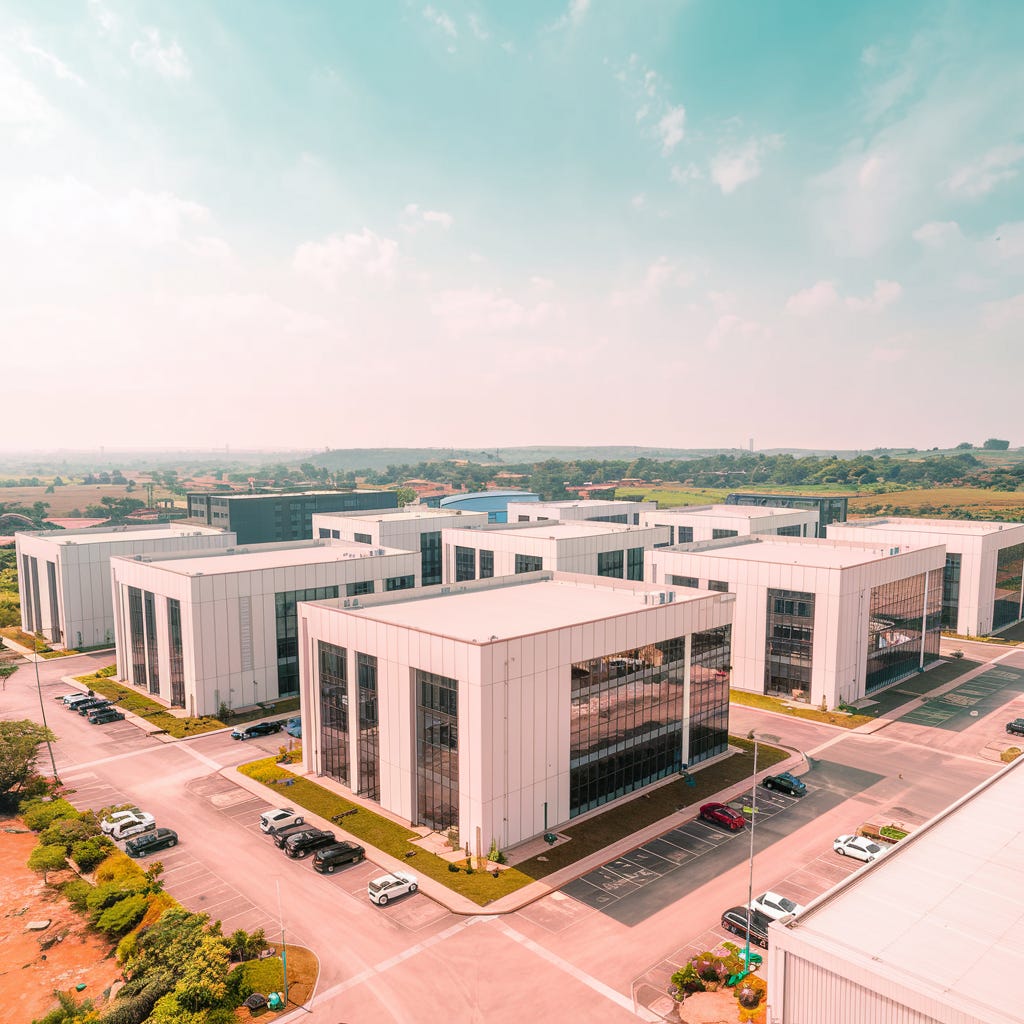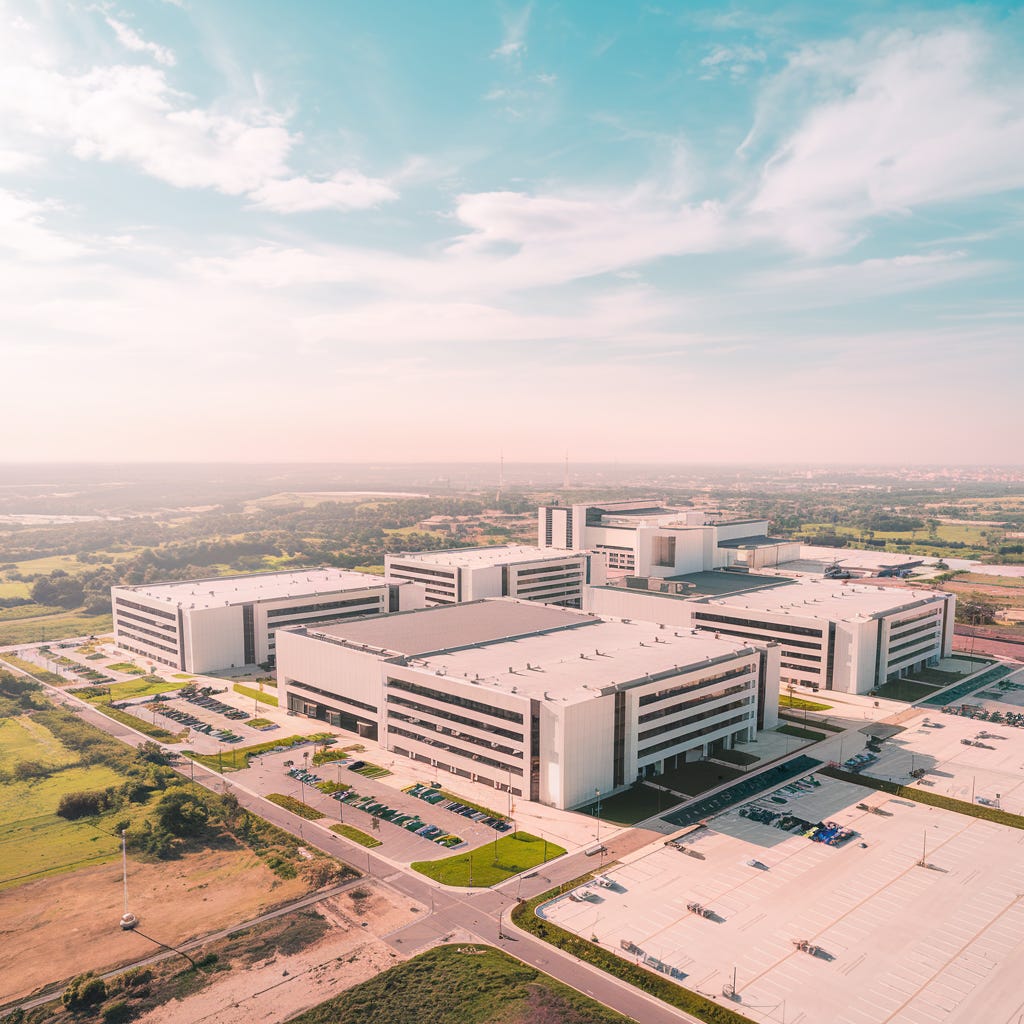Evaluating Data Center Performance Metrics: Key KPIs for Investors
Discover how regional market differences, sustainability metrics, and adaptability for specialized workloads are reshaping data center valuation across global markets.
You received this email because you subscribed to Global Data Center Hub, a newsletter about the global data center sector.
Thank you very much for supporting my newsletter this month. Your readership encourages me to provide these insights, and I’m truly grateful for it.
We publish new insights seven days a week, helping you stay ahead of the most important shifts in data centers, AI infrastructure, and global connectivity.
Our premium insights are reserved for paid subscribers.
If you haven’t upgraded yet, now’s a great time:
👉 Subscribe and join hundreds of readers of “Global Data Center Hub” with a 20% discount on the annual plan: Subscribe here
What You'll Learn
The financial implications of uptime metrics, with Tier IV facilities reducing downtime costs by up to $500,000 per hour compared to lower tiers
How PUE improvements directly impact the bottom line, with energy representing 50% of operational expenses
The strategic importance of capacity planning for supporting next-generation AI workloads requiring 30-50kW per rack
Why emerging markets require different evaluation frameworks than developed markets
A comprehensive approach to calculating data center ROI beyond standard financial metrics
The emerging role of sustainability metrics in securing premium clients and favorable financing
A strategic approach to evaluating investments across diverse data center segments and geographies
The Critical Intersection of Technical and Financial Performance
Data centers have evolved from basic IT infrastructure to specialized strategic assets that power the digital economy.
For investors navigating this complex landscape, understanding the relationship between technical performance metrics and financial returns has become essential.
Industry projections indicate the global data center market will reach $288.9 billion by 2027, but the metrics determining value are evolving beyond traditional measures.
This evolution creates both challenges and opportunities for investors.
Traditional metrics like uptime and Power Usage Effectiveness (PUE) remain fundamental but increasingly insufficient on their own.
Industry analysis shows the market is bifurcating between commodity facilities and specialized infrastructure capable of supporting advanced workloads like AI, with the latter commanding significant premiums.
Simultaneously, sustainability metrics have transitioned from nice-to-have considerations to central valuation factors as regulations tighten and corporate requirements evolve.
Additionally, regional differences increasingly affect how metrics should be interpreted and applied. Developed and emerging markets face fundamentally different challenges, requiring distinct evaluation frameworks to accurately assess performance and potential.
This article examines the key performance indicators that sophisticated investors need to understand, analyze, and prioritize when evaluating data center investments across global markets.
Reliability Metrics: The Foundation of Data Center Value
Data center reliability, measured primarily through uptime, remains the cornerstone of performance evaluation. The Uptime Institute's tier classification system provides a standardized framework with specific downtime allowances:
According to industry standards, Tier I facilities permit 28.8 hours of annual downtime, while Tier IV guarantees 99.995% uptime with only 26.3 minutes of annual downtime.
This difference has direct financial implications.
Industry data indicates that downtime costs average approximately $9,000 per minute for enterprises, meaning a single hour-long outage can result in losses exceeding $500,000, excluding reputational damage and regulatory penalties.
For investors, these classifications represent more than technical specifications. They translate to financial guarantees and risk mitigation.
Industry analysis indicates Tier IV facilities command premium pricing but deliver significantly reduced operational risk. This risk reduction extends beyond immediate downtime costs to include enhanced client retention, stronger service level agreement (SLA) compliance, and better hardware longevity.
However, sophisticated investors recognize that tier classifications alone provide an incomplete picture.
Operational excellence metrics like mean time to recovery, actual historical uptime performance, and redundancy implementation quality offer more nuanced insights into reliability.
As noted in stakeholder discussions, these operational indicators often reveal differences between facilities with identical tier ratings, helping identify superior investments within each category.
Efficiency Metrics: Translating Energy Performance to Financial Returns
Power Usage Effectiveness (PUE) continues to be the industry's standard efficiency metric, with direct implications for operational costs.
Calculated as the ratio of total facility energy consumption to IT equipment energy consumption, PUE provides a snapshot of energy efficiency.
Industry benchmarks show the average PUE hovers around 1.8, while best practice targets for new data centers typically aim for 1.4 or better.
Leading-edge facilities achieve 1.2 or lower, with exceptional examples like the National Renewable Energy Laboratory's Energy Systems Integration Facility reaching a documented 1.036.
For investors, PUE translates directly to operational expenses.
Industry data indicates energy costs often represent up to 50% of a data center's total operating expenses. Using standard industry calculations, a facility reducing its PUE from 1.8 to 1.5 could realize energy savings of approximately 17%, directly enhancing cash flow and valuation.
PUE limitations have led to complementary metrics that provide additional insights.
Industry frameworks include Partial PUE (pPUE), which measures efficiency at the row or rack level, and Data Center infrastructure Efficiency (DCiE), which expresses IT energy as a percentage of total consumption.
These metrics help investors understand efficiency distribution within facilities and identify targeted improvement opportunities.
Beyond pure efficiency metrics, energy cost tracking provides direct financial visibility.
Industry best practices include monitoring the monetary cost of energy consumption to enable realistic budget forecasting, competitive pricing, and long-term operational cost modeling.
According to industry analysis, effective energy management strategies, particularly around cooling optimization, can deliver significant savings as cooling often represents the largest energy consumption after IT equipment.
Capacity and Utilization: Indicators of Current Performance and Future Potential
Capacity metrics reveal both current operational efficiency and future growth potential.
Industry standards identify four key capacity resources requiring monitoring: space (available floor and cabinet space), power (available electrical capacity), cooling (ability to manage heat loads), and network connectivity (available ports and bandwidth).
These metrics help investors understand utilization rates and expansion headroom.
Industry observations indicate facilities with real-time capacity monitoring systems typically make more informed resource allocation decisions, leading to better capital efficiency.
Industry best practices include using sophisticated data center infrastructure management (DCIM) solutions for "what-if" scenario planning, helping operators anticipate capacity constraints before they impact operations.
Rack density, measured in kilowatts per rack, has become increasingly significant as compute-intensive applications drive demand for higher power density deployments.
Industry benchmarks show the average remains between 5-8 kW per rack, while specialized high-performance computing and AI workloads are pushing requirements toward 30-50 kW and beyond. Industry reports note some cutting-edge deployments approach 100 kW per rack.
For investors, this trend creates a market bifurcation.
As noted in stakeholder discussions, technology clients increasingly report willingness to pay premiums of 20-25% for facilities capable of supporting these advanced workloads, creating opportunities for specialized data center investors.
Industry analysis suggests facilities designed to accommodate higher rack densities represent better long-term investments as they can adapt to evolving technology requirements without major infrastructure overhauls.
ROI Calculation: Beyond Basic Financial Metrics
When evaluating data center investments, ROI calculations require a comprehensive approach that extends beyond traditional formulas. The standard industry calculation follows:
ROI = (Value Generated - Cost) / Cost
However, the "value generated" component must account for multiple factors specific to data centers.
Industry frameworks identify five key components for Total Cost of Ownership (TCO): capital expenses (initial infrastructure investment), operational expenses (ongoing costs for energy, maintenance, and staffing), downtime-related losses, compliance costs, and hardware longevity impacts.
Industry analysis indicates that while Tier IV facilities typically have higher initial costs, they often deliver better TCO through reduced operational risks and longer equipment lifespans.
For Real Estate Investment Trusts (REITs) and similar vehicles, industry-specific financial metrics like Funds from Operations (FFO) and Adjusted Funds from Operations (AFFO) provide more relevant performance indicators than traditional measures.
These metrics better account for the capital-intensive nature of data center investments and provide clearer pictures of sustainable cash flow.
Industry best practices also consider opportunity costs and alternative deployment models. Cloud-based alternatives, hybrid approaches, and edge deployments each present different financial profiles that must be evaluated against traditional data center investments.
Sustainability Metrics: From Compliance to Core Value Drivers
Environmental sustainability metrics have transitioned from secondary considerations to central valuation factors. Industry frameworks have established three key metrics alongside PUE:
Carbon Usage Effectiveness (CUE) measures carbon emissions relative to IT workload. Water Usage Effectiveness (WUE) tracks water consumption for cooling relative to computing output. Renewable Energy Factor (REF) indicates the percentage of power derived from renewable sources.
These metrics increasingly affect data center valuation through multiple channels.
Industry analysis shows regulatory pressures continue to expand, with carbon taxes, water usage restrictions, and emissions reporting requirements becoming more common across global markets.
As noted in stakeholder discussions, corporate clients increasingly include sustainability criteria in their vendor selection processes, driven by their own board-mandated environmental targets.
The financial impact manifests in both risk mitigation and value creation. Industry observations indicate facilities with poor environmental performance face higher regulatory compliance costs, potential stranded asset risk, and client acquisition challenges.
Conversely, environmentally optimized data centers often secure premium clients, longer contracts, and better financing terms.
Regional variations in sustainability importance create both challenges and opportunities for global investors.
Markets with stringent environmental regulations may impose higher compliance costs but also create barriers to entry that benefit established operators with strong sustainability credentials.
Geographic Differentiation: Metric Variations Across Markets
Data center performance metrics take on different significance depending on market maturity.
In developed markets like North America and Western Europe, where power infrastructure is relatively stable, PUE optimization and sustainability metrics often drive competitive differentiation. In contrast, emerging markets face fundamentally different challenges.
In regions like Southeast Asia, Latin America, and parts of Africa, reliability metrics take precedence due to less stable power grids.
Industry analysis indicates facilities in these markets typically maintain more substantial on-site power generation capabilities, with corresponding impacts on both capital expenditure and operational costs.
Cooling efficiency calculations also differ across regions.
The PUE benchmark of 1.4 that represents best practice in temperate climates becomes significantly more challenging in tropical environments like Singapore or Mumbai, where background temperatures and humidity create fundamentally different operating conditions.
Regional PUE targets must account for these environmental factors when evaluating relative efficiency.
Capacity planning similarly reflects regional differences.
Developed markets increasingly focus on specialized high-density zones within facilities to accommodate AI workloads, while emerging markets often prioritize flexible, general-purpose implementations that can serve diverse client needs as digital adoption grows.
This divergence suggests different evaluation criteria for expansion potential and future-proofing investments.
Regulatory environments create additional regional variation.
Data sovereignty requirements and local compliance mandates significantly impact both capital and operational expenses in ways that global benchmarks often fail to capture.
Industry best practices now include developing region-specific metrics that account for these regulatory differences when comparing facilities across markets.
Strategic Evaluation Framework: Balancing Current Performance with Future Adaptability
The evolving data center landscape requires a strategic evaluation framework that balances traditional metrics with forward-looking indicators. Industry best practices typically implement a tiered approach which we can structure as the Three-Dimension Framework:
Reliability Foundation: Establishing baseline performance expectations applicable across all facilities. These include minimum uptime guarantees, acceptable PUE ranges, and baseline financial returns.
Segment Alignment: Applying different standards based on facility type (hyperscale, colocation, edge, or specialized) and regional market context. Each segment and region requires distinct evaluation criteria reflecting their unique value drivers and challenges.
Adaptability Quotient: Assessing capabilities to accommodate changing requirements. These include power density scalability, physical security adaptability, and architectural flexibility to accommodate new cooling technologies or rack configurations.
This framework allows investors to balance risk management with opportunity capture, enabling both stable returns from established facilities and premium growth from emerging specialized segments.
It also provides flexibility to adjust metric weightings based on regional context, recognizing the different priorities in developed versus emerging markets.
Common Mistakes in Data Center Evaluation
Industry observations highlight several common errors investors make when evaluating data center performance.
Over-reliance on standardized metrics without contextual understanding leads to missed opportunities and mispriced assets. Many evaluations fail to adequately consider future adaptability, particularly for specialized workloads like AI that demand significantly different infrastructure capabilities.
Geographic-specific factors frequently receive insufficient attention, despite their substantial impact on both operational performance and growth potential.
Industry analysis indicates the increasing bifurcation between commodity and specialized segments creates distinct evaluation requirements that many traditional approaches fail to capture.
Perhaps most significantly, portfolio-level considerations often remain underweighted despite their growing importance.
Network effects across distributed data center assets, geographic diversification benefits, and ecosystem positioning all influence overall investment performance beyond individual facility metrics.
Building a Balanced Approach to Data Center Investment
Different investor profiles require tailored approaches to data center performance evaluation.
Industry best practices suggest core infrastructure investors with longer time horizons should prioritize reliability, adaptability, and sustainability metrics that support stable, long-term returns.
Growth-oriented investors might place greater emphasis on capacity expansion potential and specialized infrastructure capabilities that command premium pricing.
Implementing a comprehensive evaluation framework starts with establishing consistent measurement methodologies across key metrics while allowing for appropriate regional adjustments.
Regular benchmarking against industry standards and portfolio performance helps identify both underperforming assets and market outperformers.
The most successful data center investments balance immediate performance metrics with forward-looking indicators that suggest adaptability to changing technology requirements and regulatory landscapes.
By understanding and properly weighting these key performance indicators across different regional contexts, investors can make more informed decisions that maximize both short-term returns and long-term value in this rapidly evolving market.
One More Thing
I publish daily on data center investing, AI infrastructure, and the trends reshaping global data center markets.
Join 900+ investors, operators, and innovators getting fresh insights every day and upgrade anytime to unlock premium research trusted by leading investors and developers.





